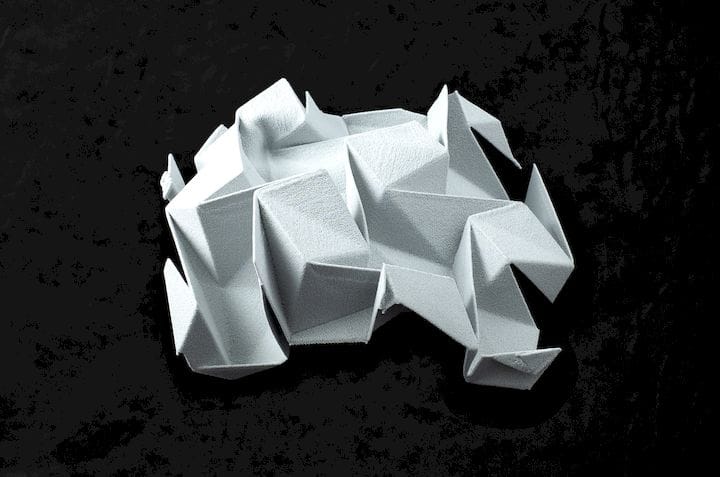![A flexible, white SLS 3D print [Source: Sinterit]](https://fabbaloo.com/wp-content/uploads/2020/05/image-asset_img_5eb0a32c1c779.jpg)
Sinterit announced a new material they call Flexa White.
This is a powder usable in their SLS 3D printing equipment that can produce flexible objects, adding to their quickly-growing material portfolio. Their laser-based system selectively fuses portions of the powder in layers to gradually form a fully 3D object.
They explain the newest material:
”Is it possible to achieve white color on a small SLS 3D printer? This question was asked a hundred times. Somehow clients love white materials, but in selective laser sintering technology, it was usually connected with big, industrial machines. Out of range for many SMEs. Now, Sinterit decided to change it and provide the first TPU material that is as close to the white color as it is possible, preserving the material’s properties at the same time.”
There’s a bit of explanation required here.
While SLS 3D printers have been around for eons, and typical powder colors have been white or near white, this has not been the case with newer lower-cost SLS 3D printers.
The first SLS 3D printers were targeted at industry and were large in size – and in price. This state of affairs lasted for some years until recently when the relevant patents finally expired. Then other startups were legally able to develop similar SLS 3D printing equipment and place it to market.
![A 3D printed, flexible earplug [Source: Sinterit]](https://fabbaloo.com/wp-content/uploads/2020/05/image-asset_img_5eb0a32c825d9.jpg)
As the patents had expired, one of the key competitive factors would be pricing among the several low-cost SLS market entrants. One way to lower the cost of the equipment would be to use lasers of lower power.
But this introduces a problem: it takes longer to fuse thermoplastic particles at a lower power, so the laser would have to move more slowly. This would enable a longer duration exposure to energy for a given area of loose powder. But that would increase the print time, sometimes considerably.
The solution was to use a different type of powder: dark colored. The darker powder would absorb more of the energy than a bright white material, enabling a speedier print. This has been the case for most of the smaller, less expensive SLS 3D printers.
But the dark color has been a problem for some users, because they may wish to color the print after it is produced. For the typical nylon prints made on SLS equipment, the normal process is to dye them. That works well on white parts, but not so well on dark parts. Not at all, really.
![A human skull 3D printed in flexible white material [Source: Sinterit]](https://fabbaloo.com/wp-content/uploads/2020/05/image-asset_img_5eb0a32cd6691.jpg)
Now Sinterit’s new Flexa White could solve this dilemma: a low-cost machine producing a white flexible part. Their previous materials are black and grey, which are in line with the theory above. But the white demands an answer to how this is accomplished.
Sinterit isn’t changing their machine’s laser to account for this new material, so I can think of only two ways for this to work.
First, it may be that the chemistry of Flexa White is such that it does melt at a faster rate than their previous material. This might imply other changes to its engineering properties (for example, a lower tolerance to heat), that should be taken into account when being used.
Or, it could be that they simply tune the machine to move the laser at a slower speed to increase melt time on the powder. If that’s the case, then the Flexa White prints might take longer to complete.
We don’t know the answer here, but we intend to find out when we visit Sinterit at formnext.
Via Sinterit











Formlabs announced a new resin, Tough 1500 Resin, which has some interesting properties and could be used as a substitute for polypropylene.